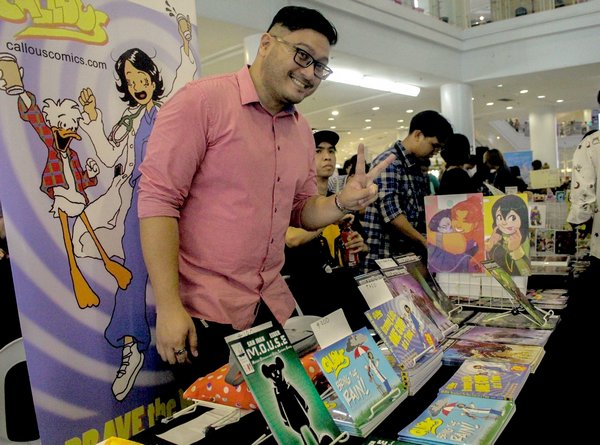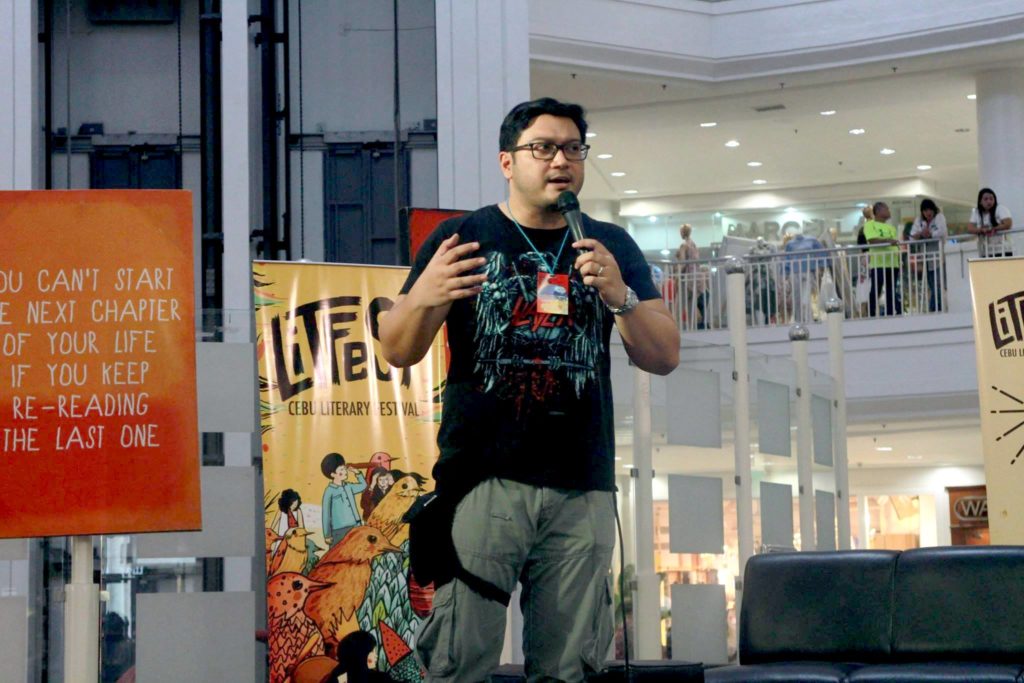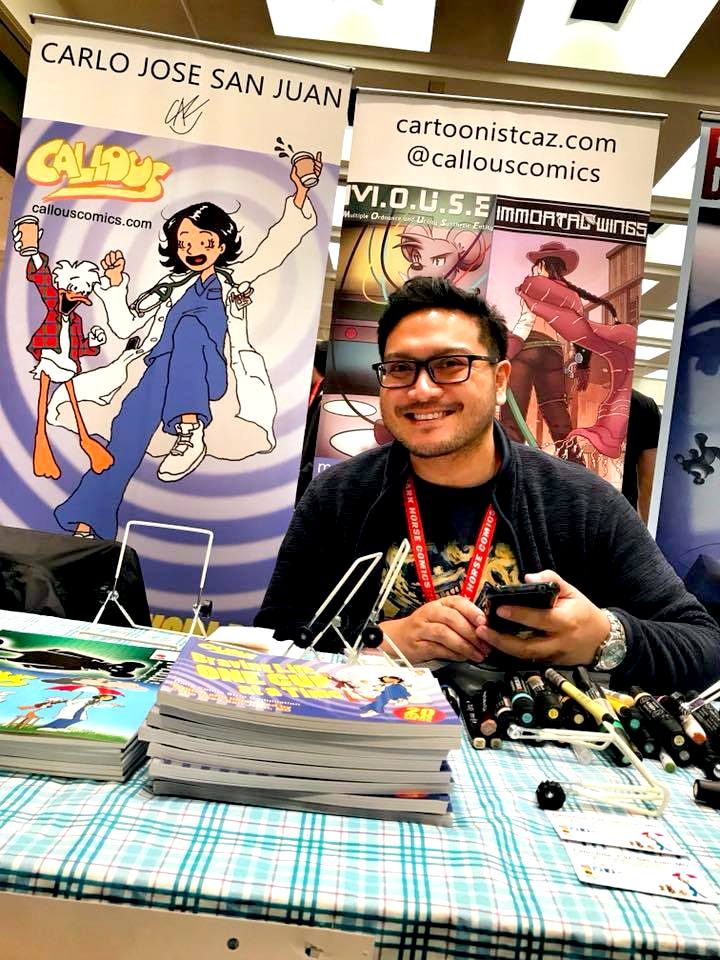“MEDICINE, law, business, engineering, these are noble pursuits and necessary to sustain life. But poetry, beauty, romance, love, these are what we stay alive for.” That’s a famous movie line of John Keating performed by the actor Robin Williams. So when a doctor is able to tap his creative side, he is able to enrich his world beyond his white coat. Carlos Jose San Juan, a nuclear medicine specialist and webcomic cartoonist, is an epitome of just that.
Doctors who earned a place in the humanities are nothing new, but given today’s demands on doctors, finding the time to indulge the right side of the brain might seem to be a luxury they can do without.
But Carlos believes that in order to be adept in the multiple facets of medical practice—in saving people’s lives —one must tackle it with a diverse view both in what sustains life and what makes
us human.
Carlos spends long hours extending the lives of his patients but when he takes off his white coat, he grabs a pen, not to write a prescription, but to continue what he started when he was young—his comic series. To him, this feeds his persona as a doctor and his experiences as a doctor feeds the stories he writes in his comics. A symbiosis, as what he calls it. You can check his website www.cartoonistcaz.com.
Carlos Jose San Juan is among the few modern-day physicians who manage to feed their creative passions while also practicing medicine.
What pushed you to study nuclear medicine?
Ever since I was young, I always wanted to go into a profession where I make people feel better. It was a natural thing for me to decide to go into medicine to do just that.
What was the deciding moment that pushed you to be a physician in nuclear medicine?
I guess it started when I became a boy scout and we were always told to help people. But as a young boy, I did not really have the opportunity to save lives so I decided to go into medicine, and now I am finally able to do that. In that regard, I feel very fulfilled.
So you’ve been very passionate about it from the start.
I think the people who would be successful in becoming physicians do need to have that drive, that passion, because it’s really hard. Even me saying that is an understatement. It’s already very hard to finish medical school, going through a long process to be a specialist is another. Just to get your license is also hard. If you don’t have that passion, if you don’t really want it that badly, you will not last long. You could finish but you’d feel incomplete in what you do.
Is there anyone in the family who’s also into medicine?
Well, my cousin is— but we’re not of the same profession. And prior to that, my parents were business people.
What does a physician in nuclear medicine do?
Like many other doctors, I go to a hospital or medical center and that’s where I work. I’m affiliated with several hospitals in Manila and each day I go to a different one.
How did you become a comic artist?
I actually started way back in high school. I was a part of the school paper and I drew comics for that. And when I got into college, I joined the university newspaper as well. I started the series that I still draw today. It’s called “Callous.” When I got into medical school, there was also a student newspaper and that’s when I made my comic series medically based. I had to go on a hiatus for the more intense years of my training to become a physician. Then one day, I just dared myself and took the comic strips online every day. The nice thing about it is that people leave comments online and I’d get feedback either from my peers, my fellow comic producers, colleagues, or just regular readers. If they don’t like it… well, the internet can be vicious, but it can be also be a nice place. Social media was just starting out when I had my web comic. I had Twitter and Facebook to communicate with me apart from email. One thing led to another, and I ended up in comic conventions then got picked up by The Manila Bulletin.
How do you take criticisms?
It depends on how well I am able to apply their criticisms. Sometimes it’s just beyond my capabilities, beyond my control, but if I do agree with the criticism, then I do apply it.
How often do you submit your works?
Daily. As often as I can. I have to make time! (Laughs)
How do you manage wearing two hats?
Well, they kind of feed off of each other. Being comic strip cartoonist in a way forces me to look at the lighter side of what I do. It can be a downer sometimes; it can be stressful being a physician. But doing these comic strips is a big relief and I really enjoy doing it. I like the reaction people get out of what I do. I think that it’s the best payoff I get. It kind of drives people to feel better and, again, that’s what I’ve always wanted from the start as a physician. When people would open the newspaper and see my comic strips, and maybe that could change their day to something better
because of what I did. And that’s from afar, you know. I’m not even in contact with these people, so that’s all a big part of the thrill for me. Then, of course, my work as a physician feeds stories for my comic strips. I would say my left and right brain are balanced. So, yeah, I’m in that constant of a bore between the two. As I mentioned, they both feed off of each other. It’s a symbiosis.
What was the first comic strip that saw print?
My comic strip called “Callous.” It’s about a doctor who happens to have a Guardian Duck. What the duck does is to guide her to become the best person she could be. During her time as a med student and as a new physician, all she did was just work and study so she never really discovered herself. Being a physician myself, a lot of my experiences as a doctor… I have a plan to do my writing.
Her name is Dr. Rianne Nicah. The duck is Cal Duck.
Why name the series ”Callous”?
Callous in Filipino is kalyo, right? It’s the toughening of the skin due to external stresses. It’s an adaptation to becoming stronger and tougher as we get these stresses in our lives. That’s
the metaphor in it. But the real story is, back when I was a college when I started the series, my editor asked me, “Hey, you have to come up with a name for your series because we’re going to publish this every month.” I couldn’t think of anything. So one afternoon, when I was alone in our publications office, there’s this very old dictionary that I dropped on its spine on the table and it split open. The first word I saw was “callous.” (Laughs). And it developed a following in my university so I stick with the name until now.
Who are the majority of your online readers?
Not necessarily medical practitioners but there’s a large percentage of that. There are also young professionals. Everyone who enjoys comic books pretty much like my stuff anyway. A lot of fellow comic artists and producers read my stuff as well.
Do you wait for inspiration to come to you?
Because of the nature of my comic work, it being daily, I kind of don’t have the luxury to wait for inspiration. But when inspiration comes along, it’s fantastic! It’s a big wave of a writing, of creativity, and I make a big pool of stories from that. When that wave waxes and wanes, at least I have that pool already. I kind of weather the storm of the writer’s block until the next wave comes along.
Can you say Callous is your biggest project as a comic artist?
Yes, because even when I was younger, I would read the newspaper’s comic strip, which is what I fell in love with. The storytelling there is very concise, very sharp, and it’s funny! It makes me feel good when I read these things. So that was what I had always wanted to be and I was very fortunate—and very grateful—that I have the opportunity to be just that.
Tell us about your other comic series.
I currently have three with one more coming up. I have MOUSE which is an acronym for Multiple Ordinance and Utility Synthetic Entity. I am the writer and procreator. The artist is Pilar Esber, she’s a manga-inspired artist. It’s about a robotic and cybernetics student who ends up becoming an intern in a mad scientist’s laboratory. It’s a sci-fi adventure and pretty much for all ages.
The other one is Immortal Wings. It’s a four-issue miniseries that was published by Antarctic Press in the US. I’m the writer, procreator, and the illustrator is Rod Espinosa, an Eisner-nominated artist. The Eisners are kind of the Oscars of comics, so being nominated is a big thing.
The last is a Space Bounty Hunter and her teleporting cybernetic dragon manager. They were hired by the Galactic Shogunate to eliminate what they perceived to be a threat to their rule over the galaxy, and that’s where the adventure begins.
And the fourth one?
It’s also a sci-fi adventure. I’m the writer and procreator and I have an artist for it.
When does this series come out?
When I can get it out! (Laughs). There’s no real released date yet but hopefully within the next couple of years.
Do you have one character that you’ve invested so much emotionally?
I would say Dr. Rianne Nicah. She’s really a reflection of my introspective thoughts when I was going through medical school. When things got really tough, I was unsure if I really wanted to continue but I soldiered on because it’s what I wanted. A lot of that internal dialogue between me and
myself is the dialogue that goes on between Dr. Rianne and the Guardian Duck, Cal.
What one experience that made an impact to you and somehow found its way to your comics?
It was a guy who was a cancer patient. He just waiting to pass on. It was the toughest year of my medical training. I was in his room taking his blood pressure. And out of nowhere, he started talking about life like how to get through hardships and just to take a look at lighter side of things. He reminded me that life is still good no matter what happens. I got sold into it. I liked his philosophy and it’s a big part of what I’m trying to say in my comics.
Do you get writer’s block?
Yes, absolutely. (Laughs).
How do you deal with that?
I would just walk around and observe what’s going on around me. If something catches my interest, then I’d make a comic strip about it. And more often than not, that’s what happens.
Describe your me-time.
If I want to recharge, ideally, I’d be lying down on a beach somewhere. But more often than not, I’d just be in a quiet place, listening to music, maybe reading a comic book.
What’s the ideal place to work on your comics?
I do have a studio at home. It’s the master’s bedroom. There’s a drafting table and another table where my computer and digital equipment are. It’s very messy. That’s where all my writing happens —in that mess. (Laughs)
What’s your advice for aspiring comic artists?
Just to get started. Even myself–and all comic artists–we all started at a certain point where we are not as good as we are today. The best thing to do is just get it started and get your work out there, and see what happens.




